
"Men play chess at the Maximo Gomez Domino park in Little Havana in Miami, where political opinions are shifting" (Schmidt,WAMC/Northeast Public Radio, 2014).
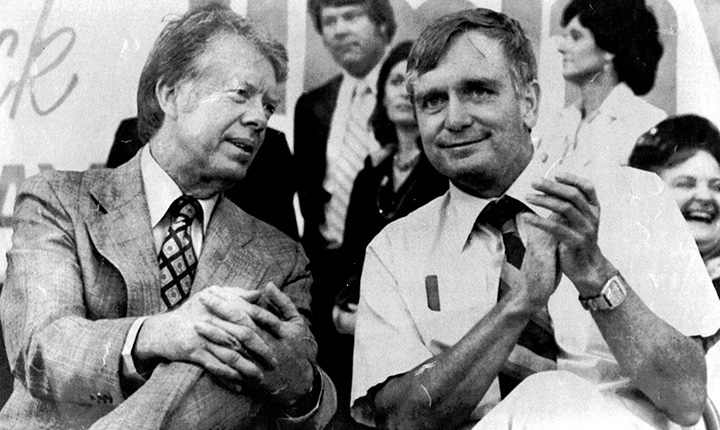
"President Jimmy Carter, with Florida Sen. Lawton Chiles, signed a key bill for Cuban refugee aid at the Florida Capitol in Tallahassee in 1980. In an interview that day, Carter, who was seeking reelection, spoke of the state’s political importance..." (Sun Sentinel, Florida Politicians Protect Cuban Status, 1980).

"Men play chess at the Maximo Gomez Domino park in Little Havana in Miami, where political opinions are shifting" (Schmidt,WAMC/Northeast Public Radio, 2014).
Under 212(d)(5)(A) of the Immigration and Nationality Act, the U.S. may parole any alien that applies for entrance. Immigration parole is physical entry after inspection but is not admittion. The parole status may be issued for humanitarian reasons such as the Mariel Boatlift.
I declare this afternoon to the people of Cuba that those who seek refuge here in America will find it. The dedication of America to our tradition as an asylum for the oppressed is going to be upheld."
- Jimmy Carter
"President Lyndon B. Johnson signed the Immigration and Nationality Act of 1965 on Liberty Island in New York Harbor"(Boston Globe, 1965).
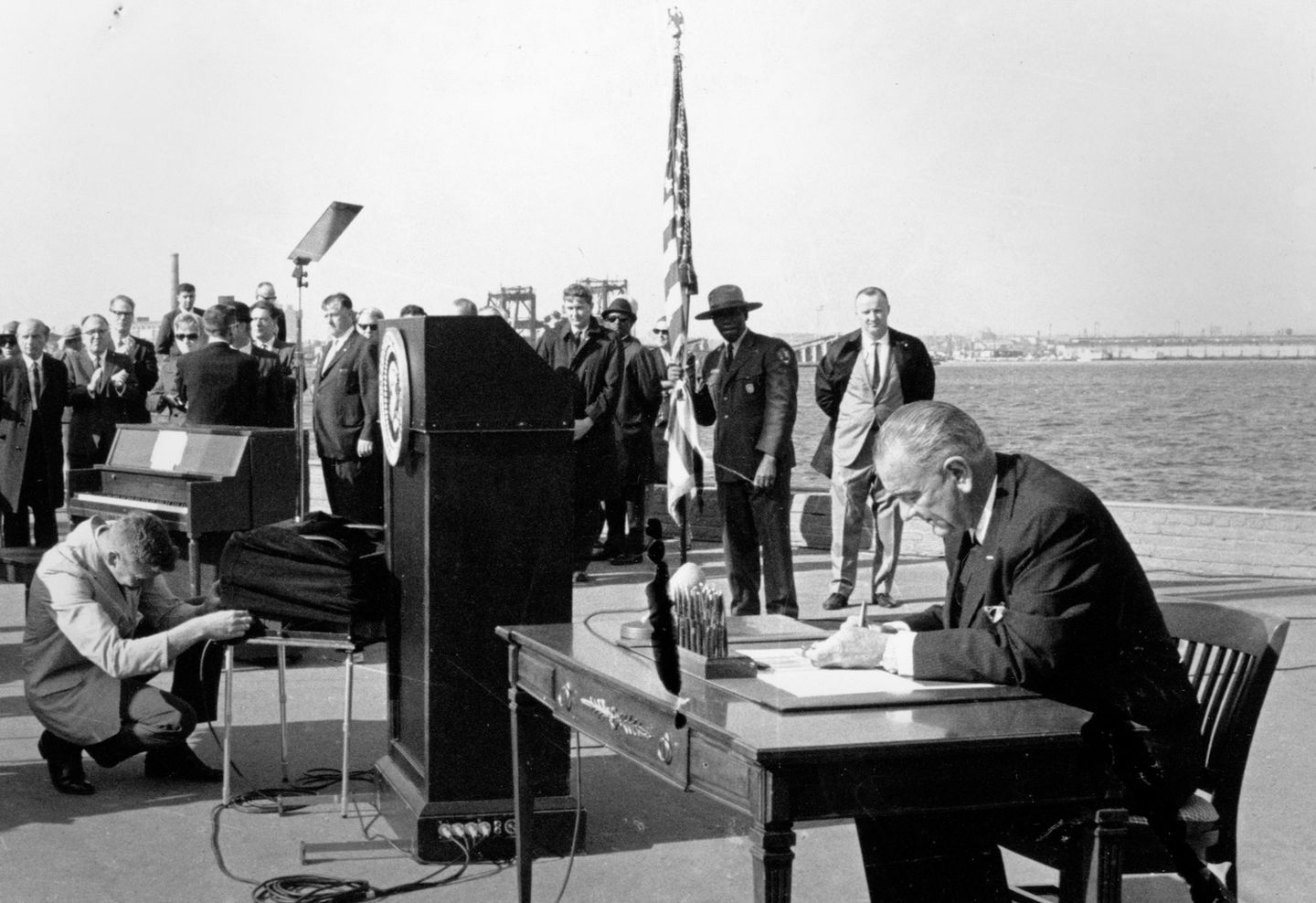
"The 1965 act contained the first statutory authority for the United States to admit refugees. The conditional entry provision, section 203(a)(7), of the INA applied only to refugees from the Eastern Hemisphere. Congress intended that provision to reduce the Attorney General's dependence on parole... Additionally, the 1965 act, restricted the number of visas that could be granted to people immigrating from the Western Hemisphere into the United States. When the act went into effect in 1968, the United States allocated at total of 20,000 immigrant visas for each country in the Western Hemisphere" (Engtrom).
The Cuban Adjustment Act of 1966 allowed Cuban citizens in the United States for one year to apply to become lawful permanent residents by getting a green card without returning to Cuba. If the Cuban is a refugee or asylum-seeker under INA §§ 207 or 208, or if the applicant was paroled before April 1, 1980, he or she would file a Form I-602, for Waiver of Grounds of Excludability.
(Washington, D.C., Legislature, House of Representatives, Cuban Adjustment Act, U.S. Citizenship and Immigration Sevices).
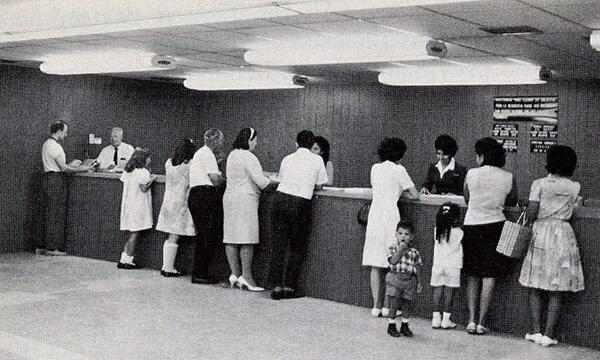
"Information counter and waiting room at the Cuban Adjustment Center, Miami"
(Annual Report of the Immigration and Naturalization Service, 1967).
"On March 17, 1980, the Senate unanimously passed and Congress activated section 201(b) of the Refugee Act of 1980, that raised the admitted refugees from 17,400 to 50,000 while creating procedures to increase the number in emergencies. This amended the Cuban Adjustmenet Act allowed the United States to overcome issues from the mass immigration. Cubans who arrived between April 1 and May 18, 1980, were considered refugees under the Refugee Act. Cubans paroled on June 20, 1980, were considered parolees. The term "refugee" was redefined as immigrants who fear persecution in accordance with the United Nations standard. The office of Refugee Resettlement and U.S. Coordinator for Refugee Affairs were funded to facilitate resettlement" (Engstrom)
"Former U.S. Rep. Louis “Skip” Bafalis of Florida, shown here in 1970, now says he never expected the Cuban refugee aid that Congress approved during the Mariel Boatlift to still be in place today" (Sun Sentinel, Special Status for Cubans).

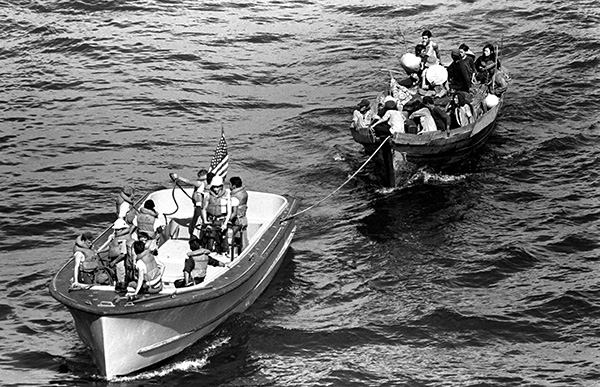
"A life boat from the USS BLUE RIDGE (LCC 19) tows a Vietnamese fishing boat to the amphibious command ship. 35 Vietnamese refugees were rescued 350 miles north of Cam Ranh Bay, Vietnam, after spending eight days at sea" (National Archives,U.S. Citizen and Immigration, 1984).
Clinton's executive order called the "Wet Foot Dry Foot" allowed Cubans that arrived on U.S. soil to stay but those interceeded in the water would be returned to Cuba. President Obama ended the policy, "which... was designed for a different era. Cuban nationals who attempt to enter the United States illegally and do not qualify for humanitarian relief will be subject to removal" (Office of Press Secretary).
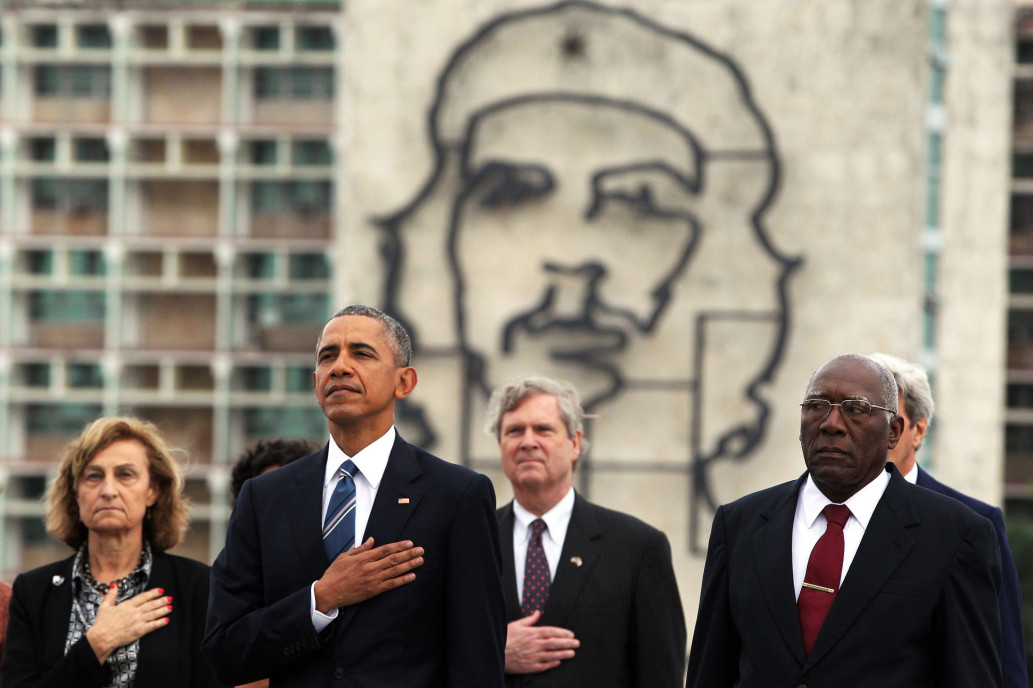
"President Obama stands in front of a mural of Che Guevara during a ceremony at the José Marti Memorial"
(“Obama Stands in Front of a Mural of Che Guevara”, New York Post).
In another bad deal by the Obama administration, it has traded wet foot/dry foot for the elimination of an important program which was undermining the Castro regime by providing an outlet for Cuban doctors to seek freedom from forced labor which only benefits an oppressive regime."
- Cuban-American Rep. Ileana Ros-Lehtinen
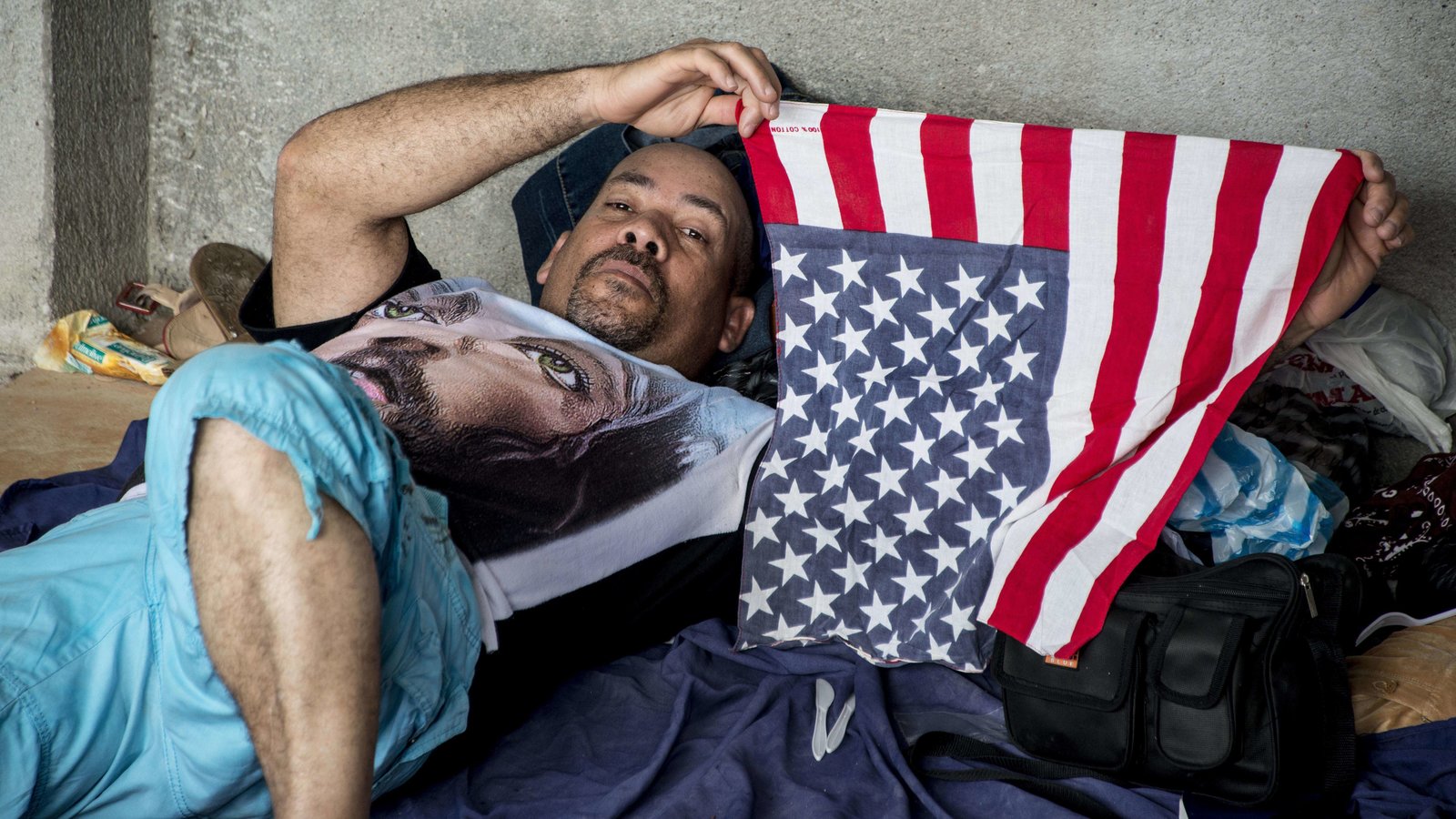
"A Cuban migrant bound for the U.S. by way of Central America rests in a shelter in Costa Rica in November 2015. Until President Obama ended the so-called wet-foot, dry-foot policy on Thursday, Cubans who reached U.S. soil either by sea or land were allowed to stay and seek permanent residency" (Ezequiel Becerra, NPR,2015).
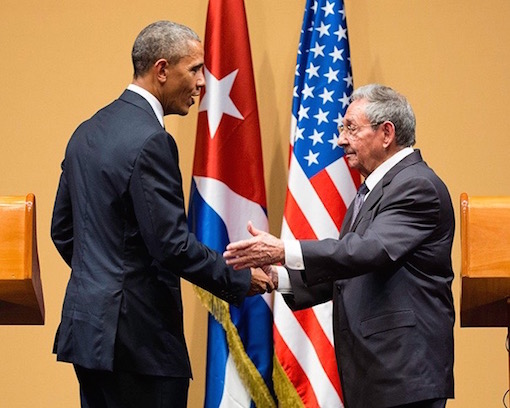
"Castro and Obama shake hands over the end of the Wet Foot/ Dry Foot Policy" (Council of Hemispheric Affairs, U.S. ends Wet Foot Dry Foot, 2017).


"During the 1980 Mariel Boatlift, two Florida lawmakers at the time, Rep. Dante Fascell, left, and U.S. Sen. Richard Stone, right, helped pass an amendment guaranteeing government aid for Cubans as refugees. Stone now says Cubans returning to the island undermine the justification for the aid, which he said should be ”thoroughly investigated" (sun-sentinel.2015). [image captions]
The Migration and Refugee Assistance Act of 1962 provided the legislative premise of future welfare programs. The Mariel Boatlift created more policy amendments through the aid of Senator Dante Fascell and U.S. Senator Richard Stone that furthered government aid of Cuban refugees. In response to Mariel, “The Refugee Education Assistance Act of 1980,” was created “To provide general assistance and special impact aid to local and state educational agencies for the education of Cuban and Haitian refugee children and adults to those that entered after November 1, 1979," (H.R. 7859 Refugee Assistance Act). The act provide different funding depending on the circumstance and the requirements to complete the basic education, supportive services, and employment counseling.
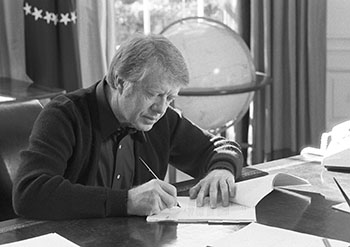
"President Carter (pictured in 1978) signed the landmark Adoption Assistance and Child Welfare Act on June 17, 1980"
(“Adoption Assistance and Child Welfare Act ”, 1978, Child Welfare Information Gateway).
"Just because it is legal does not make it right."- Christine Dahl Federal Public Defender